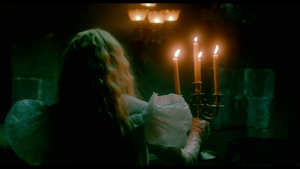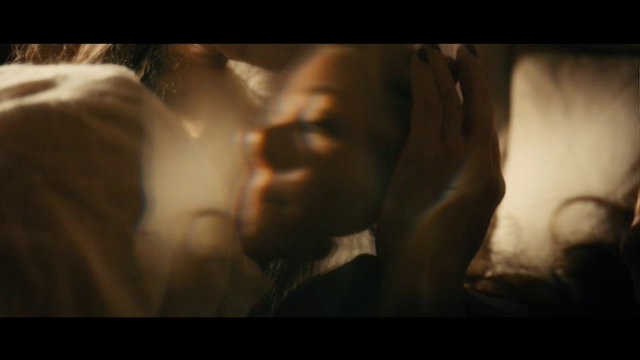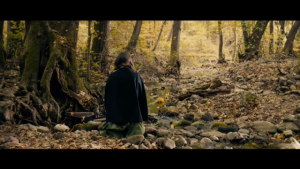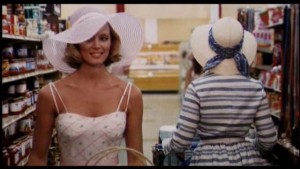After a brief break for the Festival of Projections Passages of Gothic installation, we return to the previously advertised screening schedule. All are very welcome to join us for the last of this term’s Screening and Discussion sessions, which will take place on Monday the 4th of April, 5-7pm, in Jarman 7.
We will be showing Frances’ choice The Duke of Burgundy (2014, Peter Strickland, 105 mins). Frances has very kindly provided the following introduction:
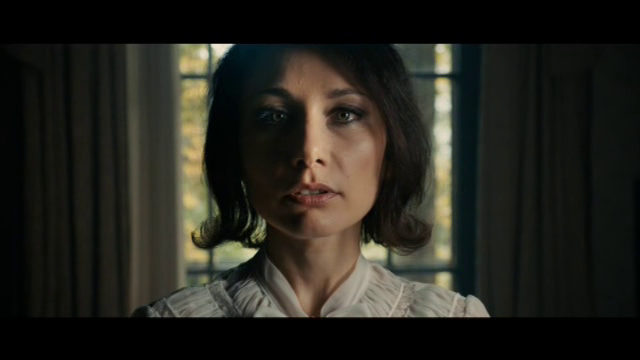
Peter Strickland’s The Duke of Burgundy (2014) is a film not easily classified. Upon its release, critics contextualised the work within European art cinema traditions, with comparisons to Luis Buñuel and Ingmar Bergman, as well as noting the influences of 1960s and 70s sexploitation films (Collin, 2015; Foundas, 2014). Strickland, himself, concurs with this broad range of inspiration, noting how, amongst others, he was inspired by films such as A Virgin among the Living Dead (1973) and Belle de Jour (1967) (Strickland, 2015). I propose that another way to interpret this challenging and compelling film is to think about it within the traditions of the Gothic. If we reflect upon the Gothic tropes and motifs discussed over the course of the term, it becomes clear how Burgundy may be analysed in this fashion. The film is set in an undisclosed place at an unknown time and – as indicated by the film’s opening scene – the narrative focuses upon the action taking place in and around the house. The film begins with Evelyn sitting alone in a woodland and the title sequence takes place as we follow Evelyn as she journeys from this peaceful area towards the large, dominating house. Upon arrival the non-diegetic whimsical music abruptly stops and the sounds of Spring audible elsewhere on the soundtrack – such as birds singing – suddenly convey a different, more menacing tone. Evelyn rings the doorbell and waits anxiously as the footsteps within take some time to finally arrive. When they do Evelyn is faced with a stern-looking Cynthia at the door who coarsely reprimands her: ‘You’re late’. Silently Evelyn walks through the door towards the dark gloom of the house within.
The emphasis upon the house and the interactions of the heroine within it, is only one way Burgundy draws upon the traditions of the Gothic. There are other motifs which we have seen in the Gothic films screened previously appearing here: the importance of a key; the idea of secrets to be uncovered and hidden places; the imperilled woman who, in this case, appears to be oppressed and abused; and the heroine’s exploration of the domestic space within darkness. Indeed, Burgundy features a memorable moment when Evelyn gets out of bed in the middle of the night– whilst significantly dressed in a white nightie – and ventures into the dark cellar, lighting her way with a candelabra. This iconic image of the investigative heroine is one we have seen numerous times in the other Gothic films watched, as reflected by the several examples we included in our Passages of Gothic installation two weeks ago. In this way, Burgundy appears to be another return to the Gothic which is evident elsewhere within contemporary cinema: the year after Burgundy sees the release of Ex Machina and Crimson Peak (both 2015). These films echo the Gothic in comparable ways as Ex Machina evokes the Bluebeard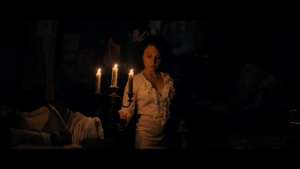 tale in its translation of the Gothic heroine into an android in a science-fiction story, whilst Crimson Peak mirrors the familiar tale of a woman marrying a man she hardly knows in manner evocative of Rebecca (1940), albeit with events now taking place in a period setting.
tale in its translation of the Gothic heroine into an android in a science-fiction story, whilst Crimson Peak mirrors the familiar tale of a woman marrying a man she hardly knows in manner evocative of Rebecca (1940), albeit with events now taking place in a period setting.
Ex Machina and Crimson Peak are reminders of the Gothic’s roots, particularly in respect to the centrality of relationships between men and women within the narrative’s trajectory. It is here that Burgundy differs. Evelyn and Cynthia are a lesbian couple and the story focuses on the dynamics of their sadomasochistic roleplaying in which Evelyn is the willing submissive. More broadly, Burgundy explores the relationships between various women within the film, with these interactions being alternately sexual, romantic, friendships, business transactions or scientific discussions. In Burgundy’s world, there are no men at all; indeed, even the mannequins which are part of the audience for the Lepidoptera lectures are female. The absence of a male figure may signal an alternative interpretation of the Gothic mode but this should not be read as a 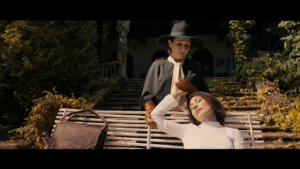 new, radical opposition to the Gothic ‘norm’ (if such a concept exists). In fact, it can be said that Burgundy harkens back to past themes and representations which can be analysed through the theories of queer Gothic.
new, radical opposition to the Gothic ‘norm’ (if such a concept exists). In fact, it can be said that Burgundy harkens back to past themes and representations which can be analysed through the theories of queer Gothic.
Queer theory and the Gothic have shared tendencies insofar as both emphasise contrary readings and the importance of subtext. George Haggerty pushes this idea further, arguing that the Gothic ‘offers a historical model of queer theory and politics: transgressive, sexually coded and resistant to dominant ideology’ (Haggerty, 2006, 2). Brian Robinson traces a similar historical connection, noting that ‘[t]he queer is inscribed in the DNA of Gothic fiction’ (Robinson, 2013, 143). This genealogy is one which the cinema inherits and capitalises upon because, as Robinson continues, it ‘was on film that the tropes of the Queer Gothic would find their full flowering’ (143). The queer readings possible – or, arguably, inevitable – of The Picture of Dorian Gray (1945) and the numerous adaptations of Dracula (1897), along with cinema’s continued fascination with vampires, strongly supports this assertion. The female Gothic can also be contextualised within this lineage: the importance of the Gothic heroine’s relationship with the archetypal ‘other woman’ begins to illuminate how such films can be interpreted through queer readings. A key example of this is the new Mrs de Winter’s discovery of the obsessive behaviour of Mrs Danvers towards her previous mistress in Rebecca (1940).
Burgundy brings to the fore the implied interpretations and queer subversions which have a historical precedent within cinema’s Gothic. In this way, the film becomes an embodiment of the uncanny: the return of the repressed which is, as Freud writes, unheimliche because this element ‘is actually nothing new or strange, but something that was long familiar to the psyche and was estranged from it only through being repressed’ (Freud, 1919, 148). Mair Rigby explores how the Gothic is queer – and how queer theory is Gothic – through the dialectics of the uncanny. Rigby argues:
When I say that queer scholarship’s encounter with the Gothic is ‘uncanny’, I mean that it appears to be based on a sense of a ‘secret encounter’ in which the texts bring to light something that ought to be repressed, something that feels particularly pertinent to people whose identities, bodies, and desires have been culturally designated ‘queer’. (Rigby, 2009, 48)
Burgundy presents this ‘bringing to light’ quite overtly through the portrayal of a world without men and in the detailing of alternative sexual practices which form an integral part of pivotal scenes between Evelyn and Cynthia. The fact that the most explicit forms of these acts remain off-screen only emphasises further their unheimliche nature: they are both familiar and normalised – we meet The Carpenter who specialises in building sadomasochist contraptions – and strange and marginal, as reflected by the way these practices are pushed to the periphery of the frame. Most importantly for Burgundy, however, is how the uncanniness of the story draws attention to the dynamics of the relationship between Evelyn and Cynthia, which is fraught with difficulties. By presenting us with two Gothic heroines, the film returns us to the central questions which orbit the archetypal female protagonist within this mode of storytelling: is the house a safe space or a danger? Within the romantic relationship, who holds the knowledge and the power? Whose secret is to be uncovered? What forms of oppression must the female protagonist(s) struggle against? Burgundy therefore revisits the ‘queerness’ of the Gothic and the significance of the Gothic heroine, although the film offers some surprising answers to the questions above: just like the ‘repressed’ returning to the light through the processes of the uncanny, so too does Burgundy remind us how what we initially think of as familiar or unusual, may quickly become conversely strange and homely.
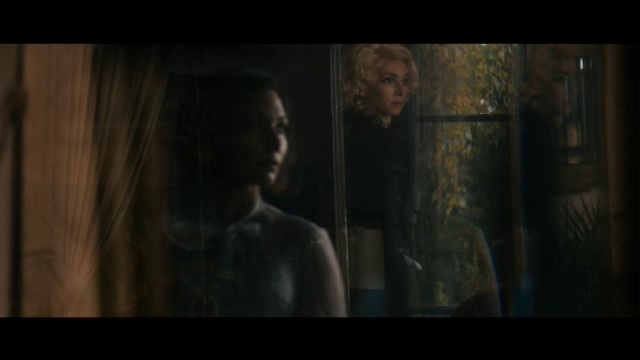
References
Collin, R. (2015). The Duke of Burgundy: ‘Sexy and Strange’. [Online]. The Telegraph. Available from: http://www.telegraph.co.uk/film/duke-of-burgundy/review/ [Accessed 30 March 2016].
Foundas, S. (2014). Film Review: The Duke of Burgundy. [Online]. Variety. Available from: http://variety.com/2014/film/festivals/film-review-the-duke-of-burgundy-1201331373/ [Accessed 30 March 2016].
Freud, S. (1919). The Uncanny. In: Freud, S. (2003). The Uncanny. London: Penguin Books Ltd.
Haggerty, G. (2006) Queer Gothic. Urbana: University of Illinois Press, 2006.
Rigby, M. (2009). Uncanny Recognition: Queer Theory’s Debt to the Gothic. Gothic Studies, Volume. 11 Issue 1.
Robinson, B. (2013). Queer Gothic. In: Bell, J (Ed). Gothic: The Dark Heart of Film. Witham: Colt Press.
Strickland, P. (2015). Peter Strickland: Six Films that Fed into The Duke of Burgundy [Online]. BFI. Available from: http://www.bfi.org.uk/news-opinion/news-bfi/features/peter-strickland-six-films-fed-duke-burgundy [Accessed 30 March 2016].
Thanks very much for the introduction Frances! Do join us, if you can, for what sounds like a fascinating Gothic film many of us will have been intrigued by whilst watching the Passages of Gothic installation.


